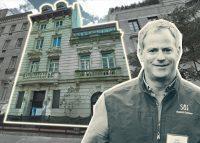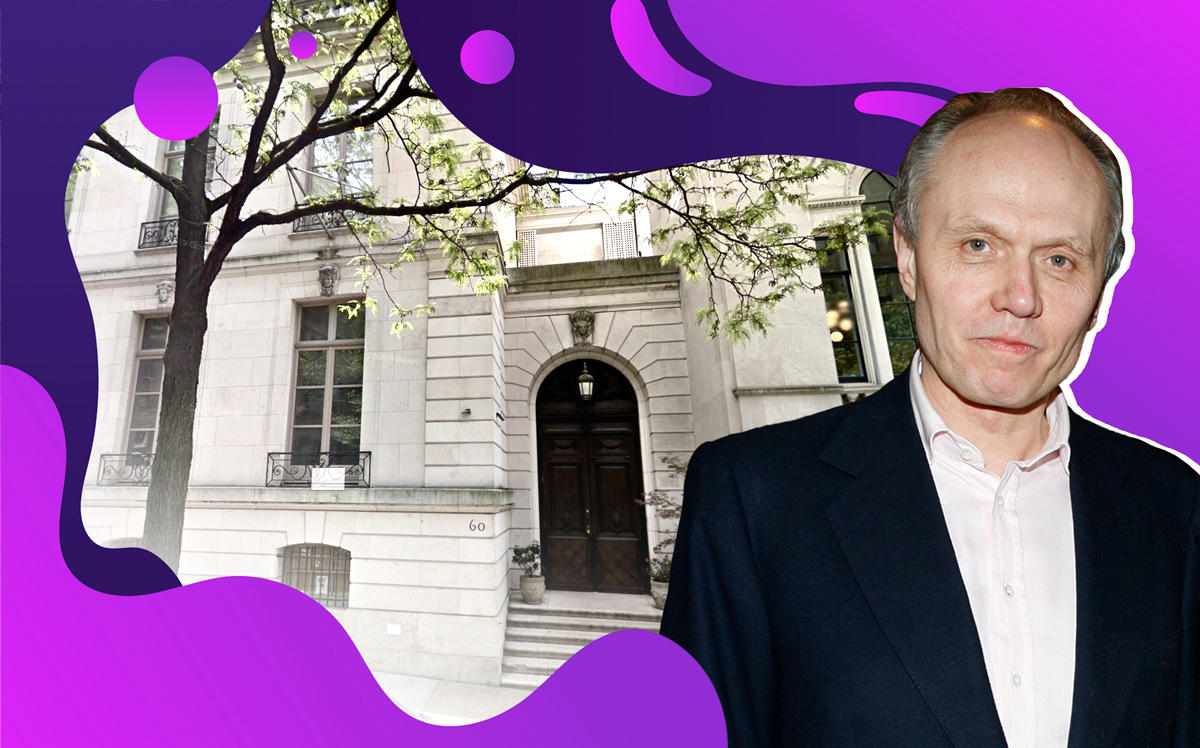It could have been one of the priciest townhouses ever sold in New York.
This October, British antiques dealer Carlton Hobbs, who was accused of selling fakes a decade ago, quietly listed his Upper East Side commercial townhouse for $68 million.
The 57-foot wide limestone mansion at 60 East 93rd Street measures a whopping 23,000 square feet. The property, which last traded hands in 2002, was being shopped by Brown Harris Stevens’ John Burger, who described it as an “exceptional off-market exclusive” in an email that recipients shared with The Real Deal last Wednesday.

Brown Harris Stevens’ John Burger
But the seller abruptly pulled the listing on Thursday after the Wall Street Journal reported the house was for sale. “The seller, on Dec. 5, asked us to please discontinue any and all marketing efforts,” said Burger, who declined to elaborate out of respect for the client’s privacy.
When a TRD reporter visited the property Friday, an unidentified woman said it was never for sale and she believed the listing was a hoax. But BHS has disputed that account.
“It would be illegal for a real estate broker to market a property without the explicit permission of the seller, either through a signed exclusive or an open listing agreement,” a spokesperson said in a statement.
When the reporter later emailed Carlton Hobbs LLC, stating TRD had confirmed the listing’s authenticity, Stefanie Rinza, the company’s managing director, declined to comment.
According to Burger, the seller insisted that the property be listed off-market. As a result, the building number and street name were scrubbed from marketing materials, which Burger sent to key contacts and potential buyers. Several brokers told TRD they’d visited the house over the past six weeks.
“We were not allowed to publish the address, we were not allowed to create a brochure, not allowed to put it in the listing computer system,” Burger said.
Given the enormous price, the owner’s decision to pull the listing is a major loss for BHS. Originally the home of socialite Virginia Graham Fair Vanderbilt, the unique property was owned for many years by the elite private school Lycée Français de New York, which sold off six townhouses for north of a combined $57.9 million, records show. Hobbs bought it for $10.6 million in 2002, records show.
After an extensive renovation, the property served as a gallery for Hobbs’ antiques business, which could explain why he was so reluctant to go public with plans to sell.
In 2008, Hobbs became embroiled in a bitter dispute with his brother and former business partner, John Hobbs, that played out in the press in New York and the U.K.
Both were accused of manufacturing and selling fake antiques by a furniture restorer, Dennis Buggins, who worked for the brothers. Both John and Carlton Hobbs denied wrongdoing. Ultimately, John Hobbs was forced to close his shop while Carlton reached a seven-figure settlement with Buggins, according to John Hobbs’ obituary in the Telegraph.
While the conflicting accounts about the latest attempt to sell the property are far from ordinary, the case offers some insight into an opaque corner of luxury real estate: whisper listings.
The number of such listings has proliferated in recent years, as some sellers look to test the market before officially listing a property for sale.
This year, the Real Estate Board of New York tightened its rules for excessive whisper listings. Its 2019 universal co-brokerage agreement states that no broker “shall promote or encourage” owners to list their properties off-market. In November, the National Association of Realtors (NAR) also restricted the use of whisper listings.
Brokers have been divided on the subject, with some defending clients who demand privacy and others insisting that the best way to sell a property is to market it widely.
The townhouse market has been limping along, with 37 deals in the third quarter this year, down from 67 a year prior, according to the residential brokerage Core. Before that, however, hedge funder John Griffin set a record by paying $77 million for financier Philip Falcone’s townhouse at 14-16 East 67th Street in June. (Previously, the city’s townhouse record was set in 2006 when J. Christopher Flowers paid $53 million for the Harkness mansion on East 75th Street.)
Some said Hobbs’ $68 million price tag — which comes out to roughly $2,957 per square foot — was aspirational.
“If it was that price in a good market, I can see someone paying it,” said Jed Garfield of Leslie J. Garfield. “But not in a down market.”
Write to Sylvia Varnham O’Regan at so@therealdeal.com and E.B. Solomont at eb@therealdeal.com
Read more


